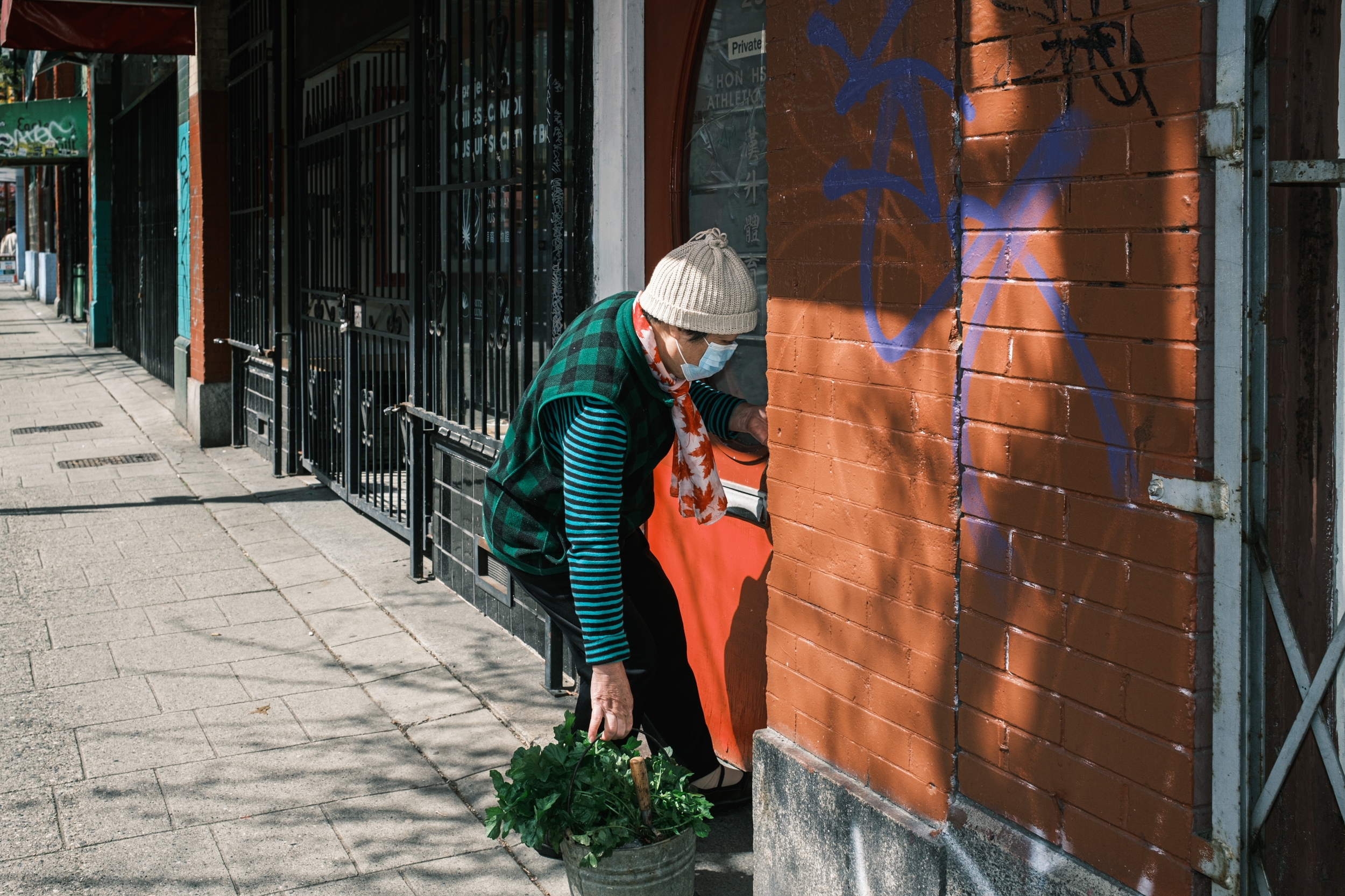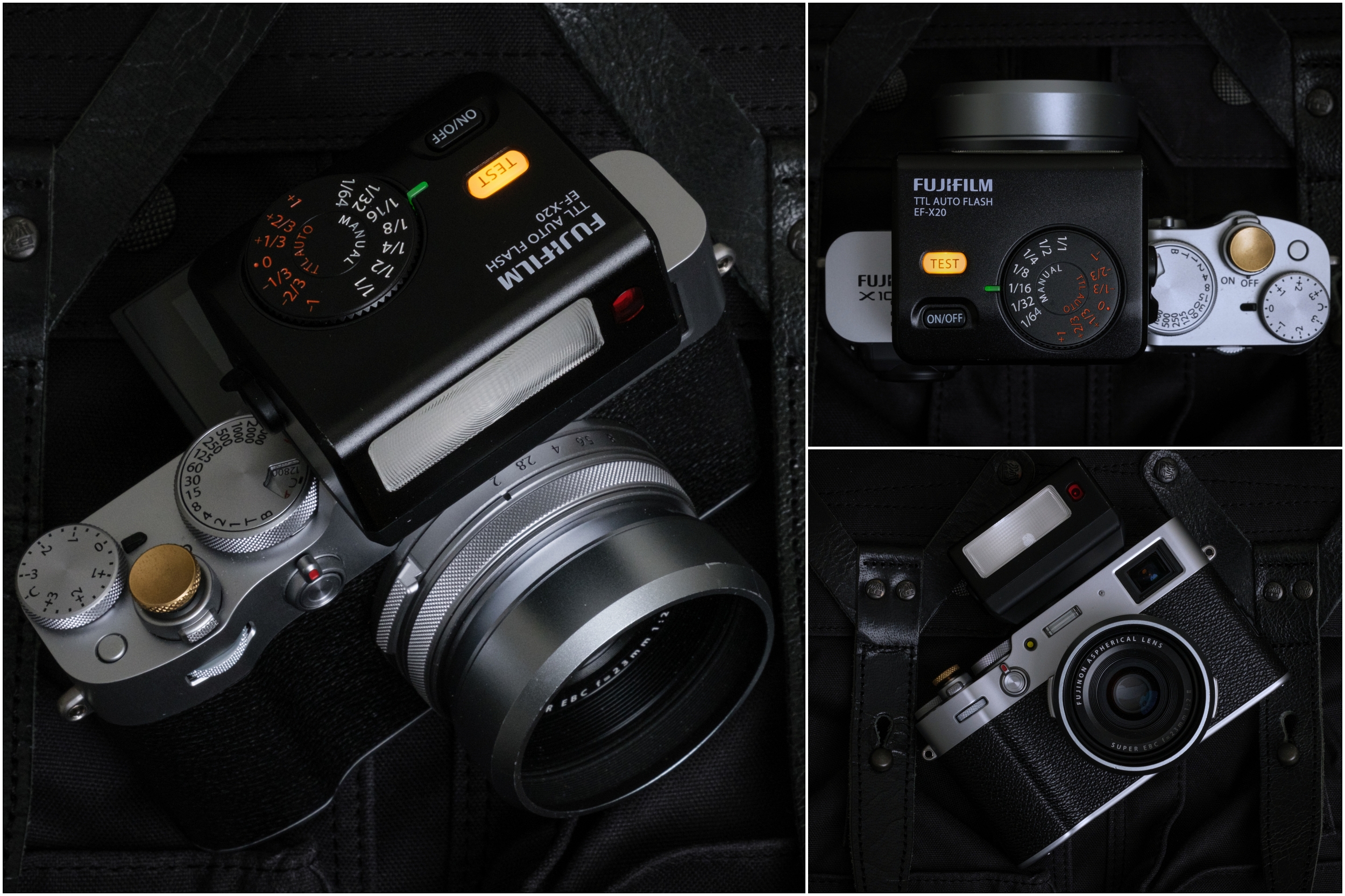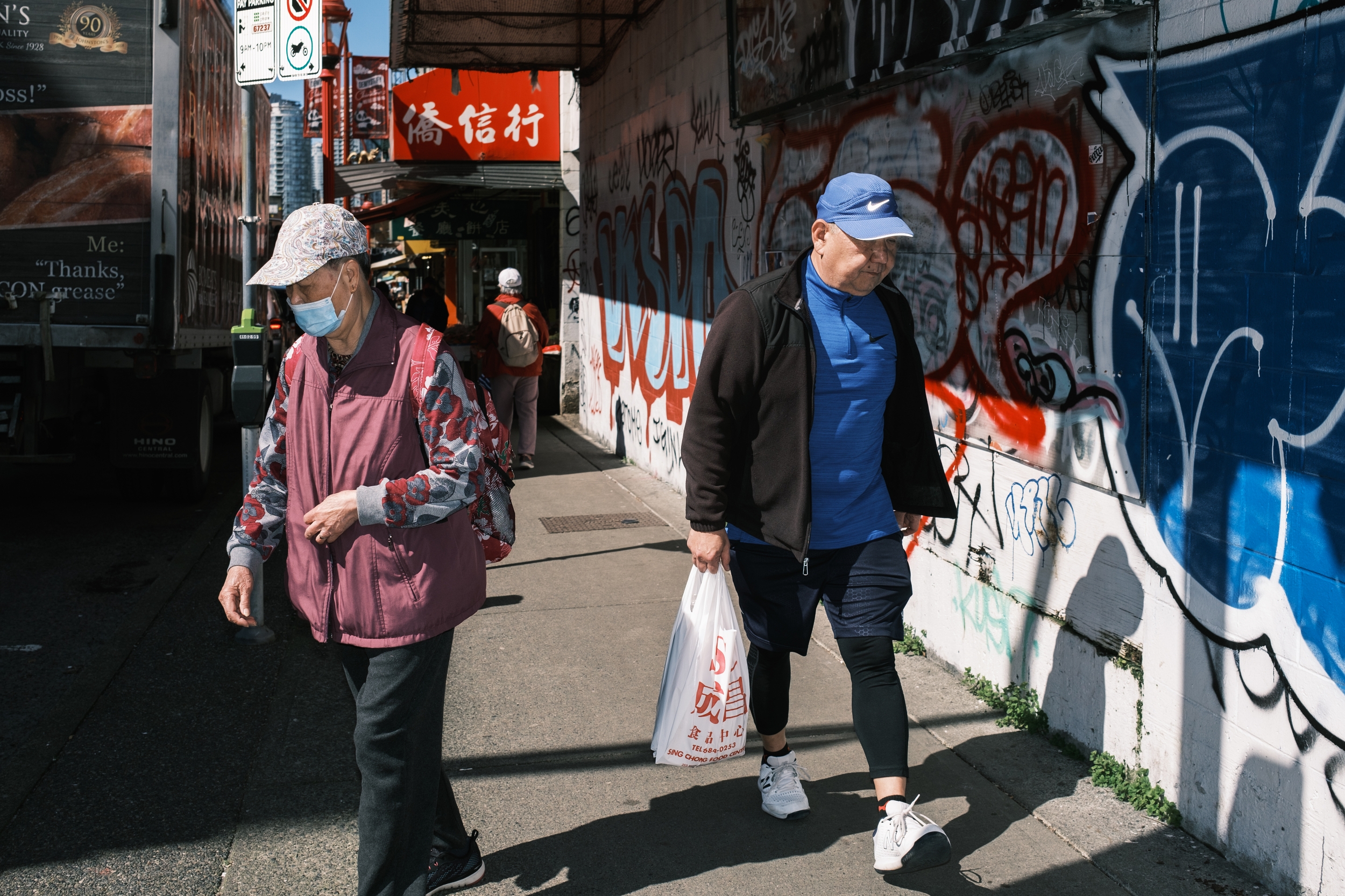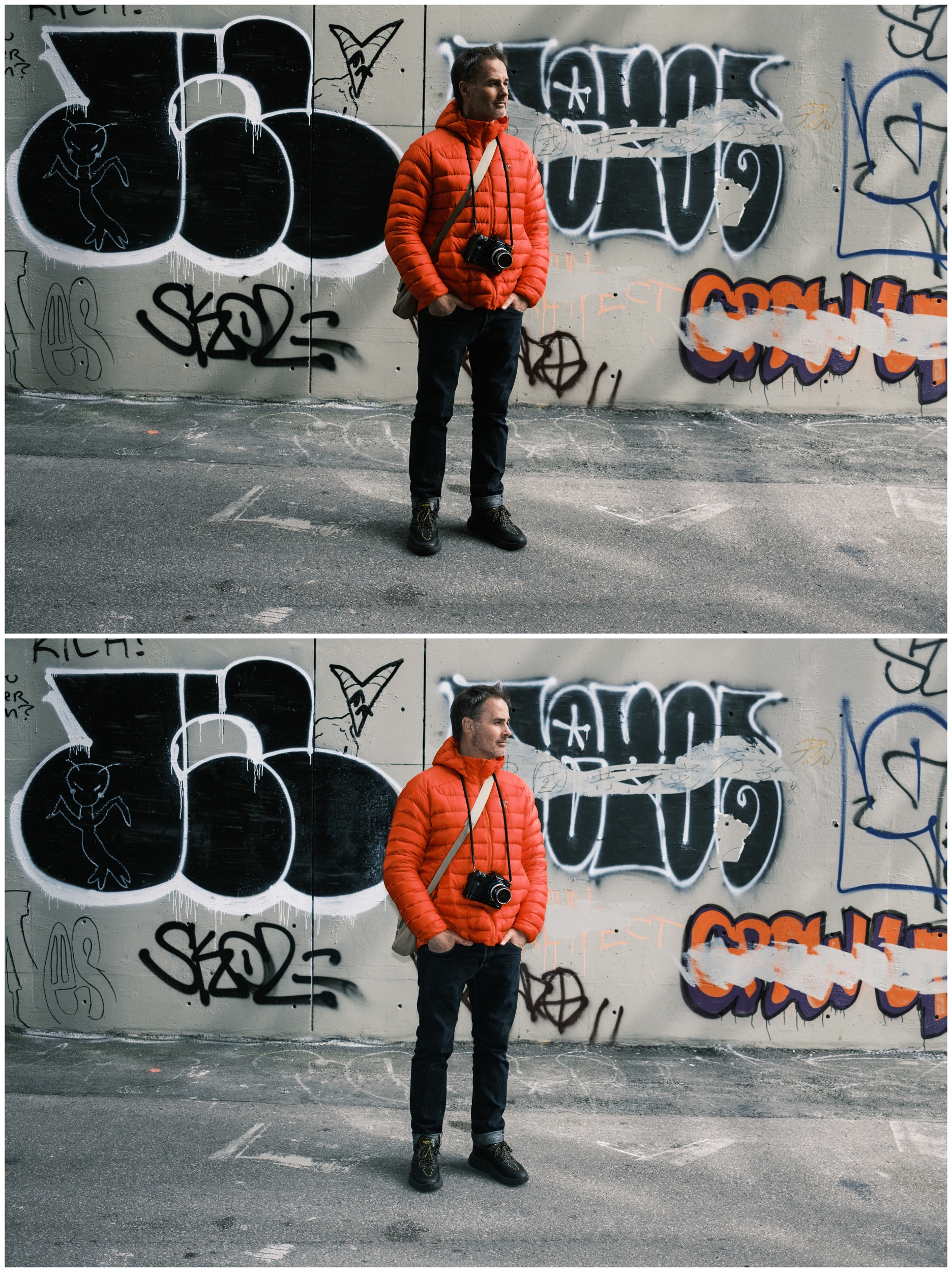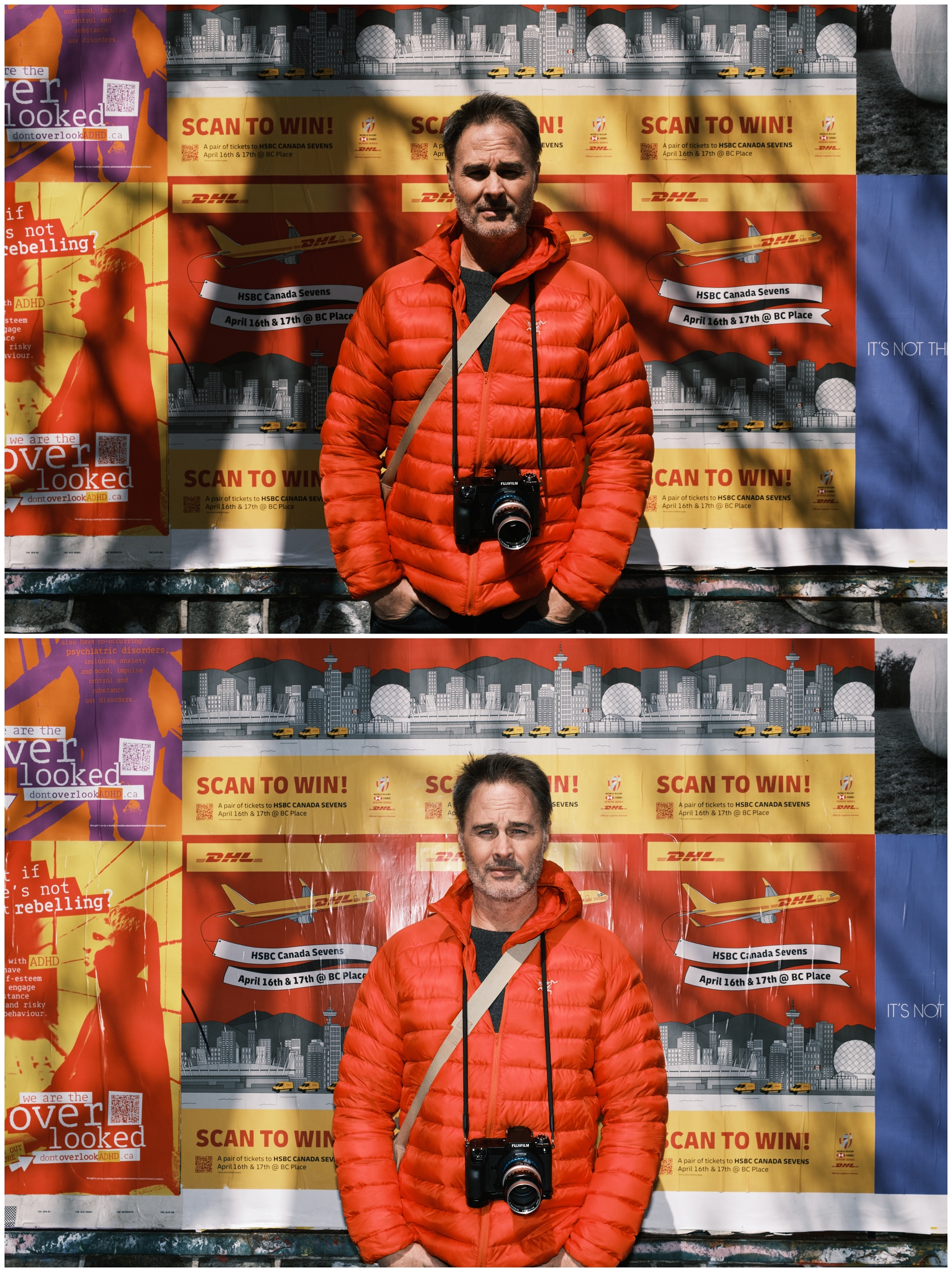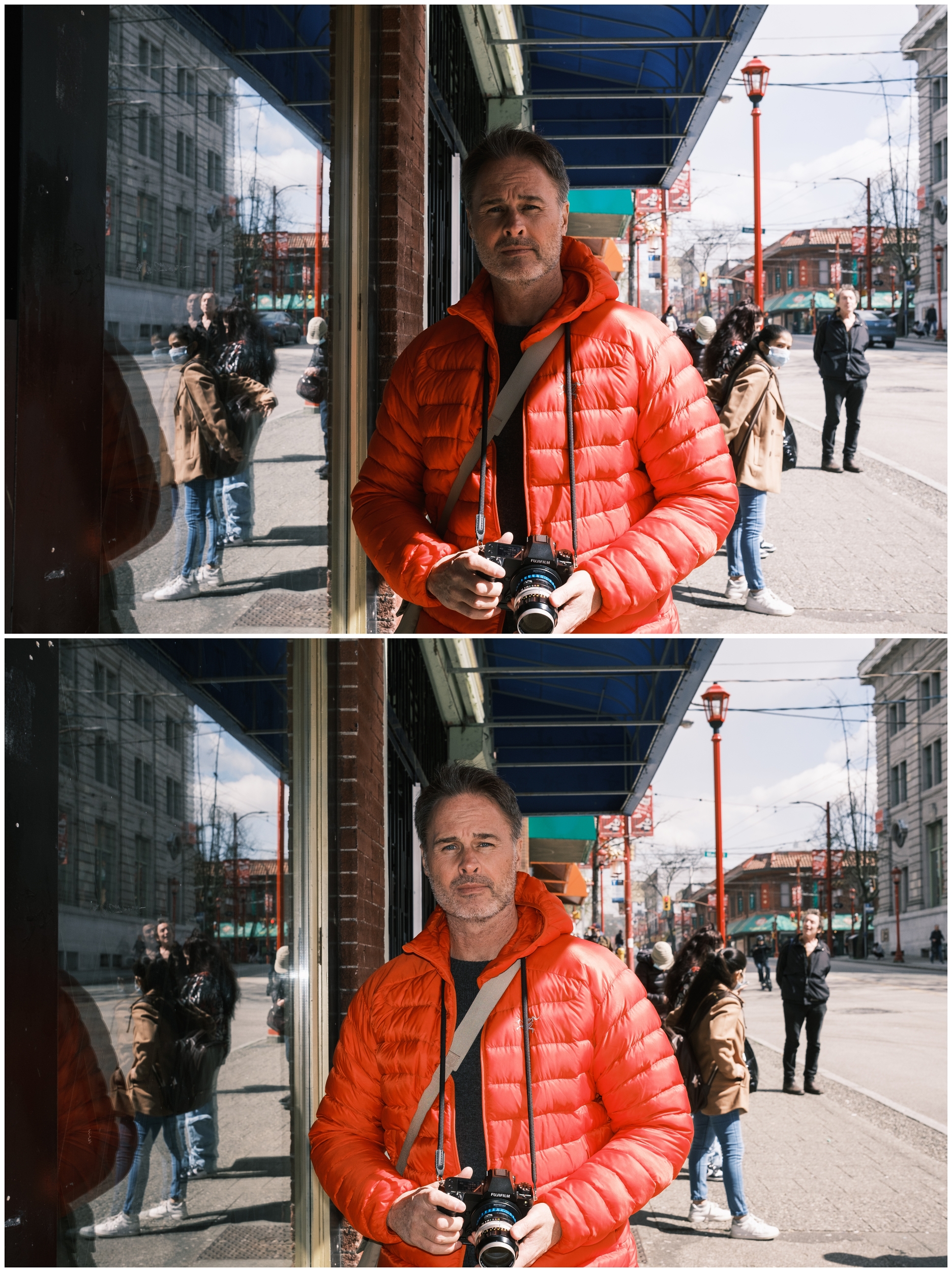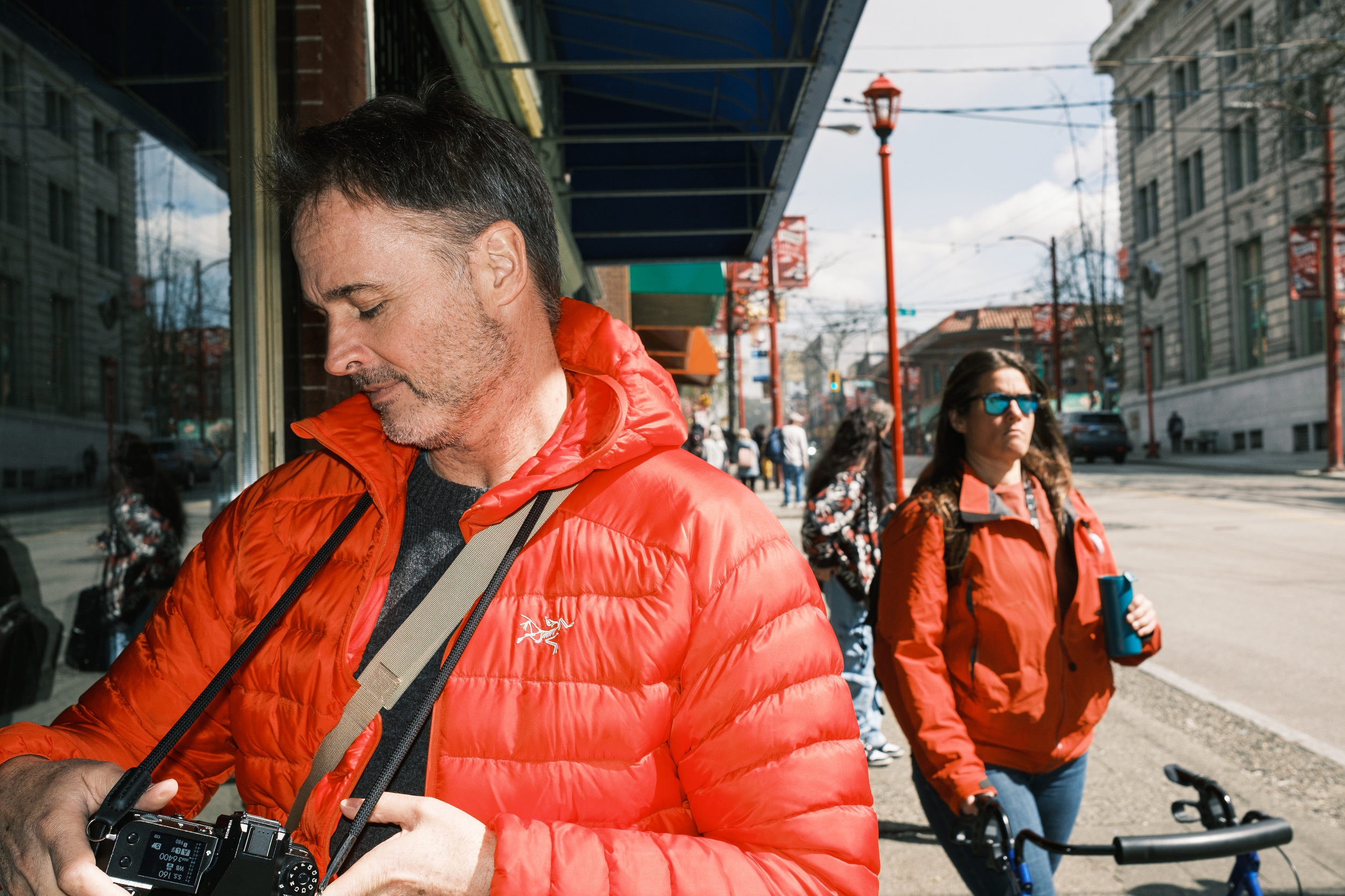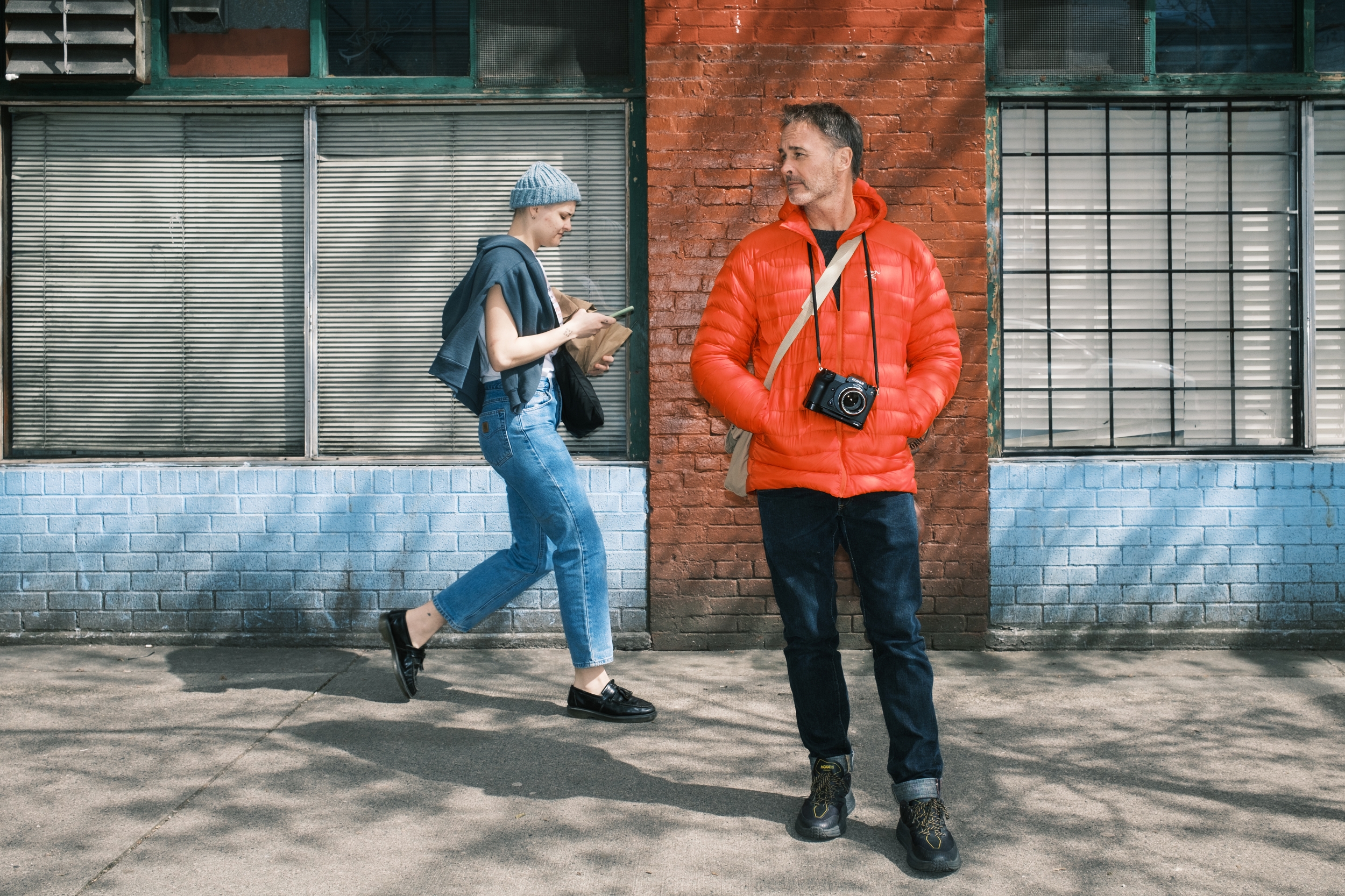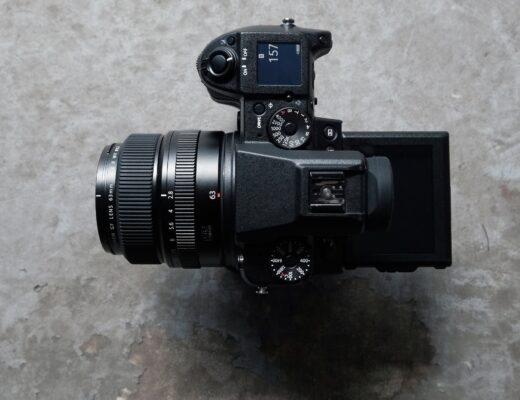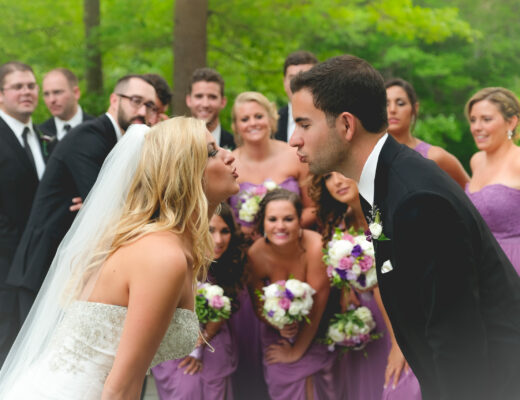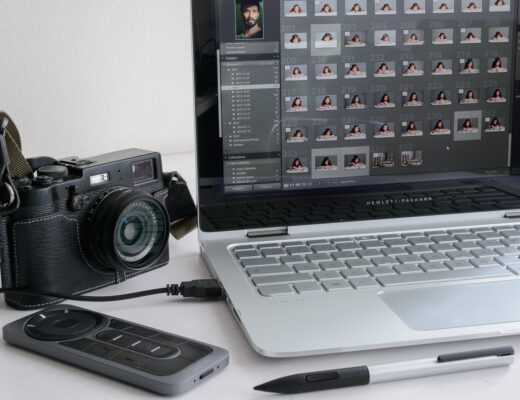When I’m asked what I love the most about the X100 series, I usually start with the leaf shutter lens design. This means the shutter is built into the lens, and not directly in front of the image plane, which is how most interchangeable lens cameras work, including film cameras. The advantage of having a leaf shutter lens is immediate. The shutter sound is almost inaudible when outdoors, making it perfect for street photography. There is another unique feature of a leaf shutter lens that many don’t know about or don’t use often, which is the high flash sync speed. I wrote an article about this for FujiLove six years ago, but I wanted to revisit this subject again. I get a lot of questions on why I use a flash in the middle of the day, or why using a compact flash in conjunction with a leaf shutter lens is advantageous for this style of photography. Let’s begin by looking at my photos from my afternoon with the Fujifilm X100V and the EF-X20 flash on the streets of Vancouver.
Let’s first talk about why I use a flash even when the sun is out. There are times when you don’t need to use any flash at all during the day, especially if you’re not photographing people, or if there is enough open space with even or unique lighting on your subject. Many street photographers have built their entire aesthetic based on ‘chasing light’ or using silhouettes, and feel they don’t need to use a flash. You can definitely shoot street and never use a flash, but learning how and when to use a flash will definitely add to your photographic repertoire. I always carry some sort of external light with me, including during the day. My favourite flash to always have on hand is the Fujifilm EF-X20 flash. This compact flash was designed to work with the original X100 and X-Pro1, but it can work with any Fujifilm X Series camera in TTL mode. It can also work with any brand of camera in manual mode, as long as it has a standard hot shoe with a centre contact pin.
Although the EF-X20 only uses two AAA batteries and has a maximum guide number of 20M (12M in wide mode), you don’t need a lot of power when you match this flash with a camera with a leaf shutter lens. This is because (in general) a leaf shutter-equipped camera can flash sync at all shutter speeds (except in electronic shutter mode). For instance, the X100V can use the flash right up to 1/4000s top mechanical shutter speed, while the X-T4 can only sync to a maximum of 1/250s. Why is it advantageous to sync to such a high shutter speed? Because during the day, your shutter speeds are usually higher than 1/250s, especially if you’re shooting at wide apertures, and to compensate you have to stop down. As an example, if the X100V can take an image with flash at f/2 and 1/4000s, the X-T4 will have to take the same image with flash at f/8 and 1/250s. And since flash exposure is only affected by the aperture and not shutter speed, the flash has to output four stops more power to light the same scene or subject. Using 4 stops more power means the flash is more obvious and consumes more power, slowing down the flash recycling speed.
When it comes to flash street photography, many think of photographers like Bruce Gilden and his controversial ‘in your face’ style while capturing his unwitting subjects. One thing you’ll notice is that he typically shoots with a Leica M body, which has a maximum flash sync speed of 1/50s (there is an exception with the M7 and a matching HSS flash unit). Even with slow film, to properly expose his subjects during the day with flash, he would most likely be stopped down to f/11 and use a powerful flash that would temporarily blind his subjects due to the output. With the X100V, because of the high flash sync speed of up to 1/4000s, you can use the EF-X20 flash at a much lower power output, making it difficult to notice on a busy street with other visual distractions. Moreover, I’ve used this style of street photography for many years and I’ve never had any issue with people noticing the flash.
However, if the idea of using flash on strangers in the middle of the day is not your thing, I still recommend giving it a try with your street portraiture. I invited local photographer Kyle Riefsnyder to come out and shoot with me as I tested daylight flash photography with the X100V and EF-X20. Kyle had his GFX100S and Nikkor 105mm f/2.5 and took some photos of me as well. I did some back-to-back samples of portraits I took of Kyle with and without a flash. Most of the images looked better with flash, although sometimes it did flatten the image. If I had an off-shoe cable and used the WCL-X100 converter lens, I could have given the images a bit more depth; but overall I was pleased with what this little flash could do. Most of the time I was at 1/4 power, which meant it could recharge quickly, triggering the flash every 1-2 seconds. I personally don’t like using the TTL mode, but even if I did, there is up to 1 stop + or – to adjust for the lighting situation.

X100V + EF-X20. 1/170s f/5.6 @ ISO 400. Gökhan + José
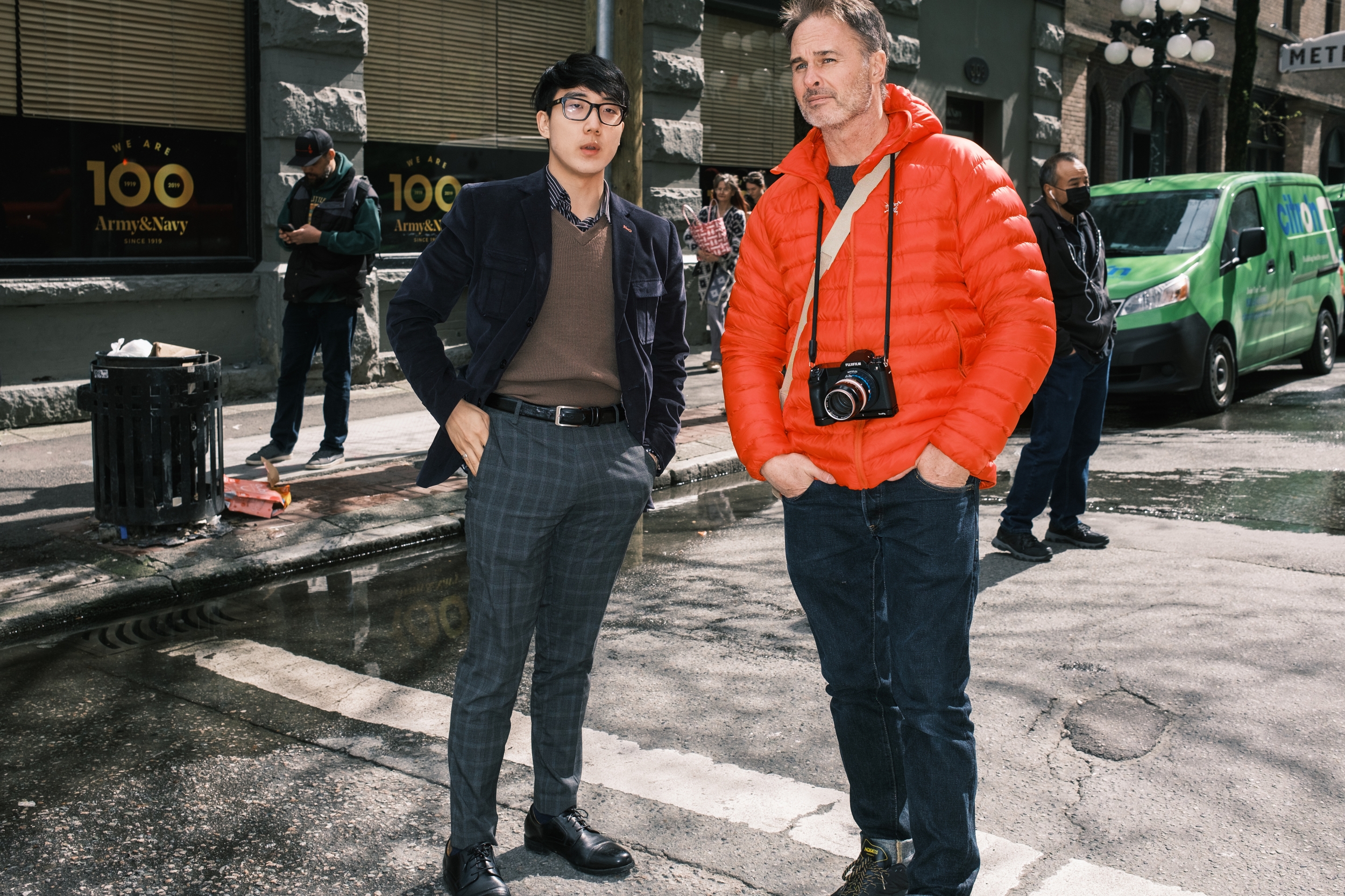
X100V + EF-X20. 1/1000s f/4 @ ISO 400. Joseph Ku + Kyle R
In terms of camera set-up, I just shoot in aperture priority mode and allow the camera to pick the appropriate shutter speed since the flash can work at any mechanical shutter speed (it won’t work in electronic shutter mode). In the main menu of the camera, you can go to the flash setting and make further adjustments, like first or second curtain flash, but since I’m shooting at such high shutter speeds, it won’t really make a difference. In general, I keep it second curtain flash since I want the flash to pop at the end of the exposure, not the beginning. Remember if you decide to use exposure compensation on the camera in aperture priority mode, you’re not affecting the flash exposure, just the ambient exposure. If you find the flash is too hot, you have to adjust the power on the flash unit itself or use the in-camera menu to reduce flash power output. Balancing the ambient exposure and flash exposure gives you a lot of control over your image, but it does take a bit of time to be fluent at analysing your scene and quickly making your adjustments. If you’re just starting out, it might make sense to shoot in TTL mode and then start to experiment from there.
I had a great time using the compact EF-X20 flash on the X100V. Both the camera and flash are compact, light, quick to use and discreet. The flash perfectly matches the look of the X100V as well, with its retro top dials and blocky good looks. However, I do have some bad news. The EF-X20 is discontinued. It may still be available as new from some retailers, but Fujifilm no longer produces this flash. Many years ago I told Fujifilm how awesome the flash is and that they should update it (slightly bigger with AA batteries, LED video light, RF wireless control), but they said they weren’t interested. It’s too bad because the EF-X20 is a well-designed compact flash. I know many Leica shooters who love using it and I use mine on the Ricoh GR all the time. If you can find one of these new or used, I think it’s worth buying. Even on the third-party market, compact, capable and reliable flash units are hard to come by. I have two EF-X20 units and I would buy a third one at the right price. Let me know if you have used the EF-X20 flash on any of your Fujifilm cameras, and if you’ve tried or enjoyed using it for daylight fill. Thanks for reading and happy shooting!
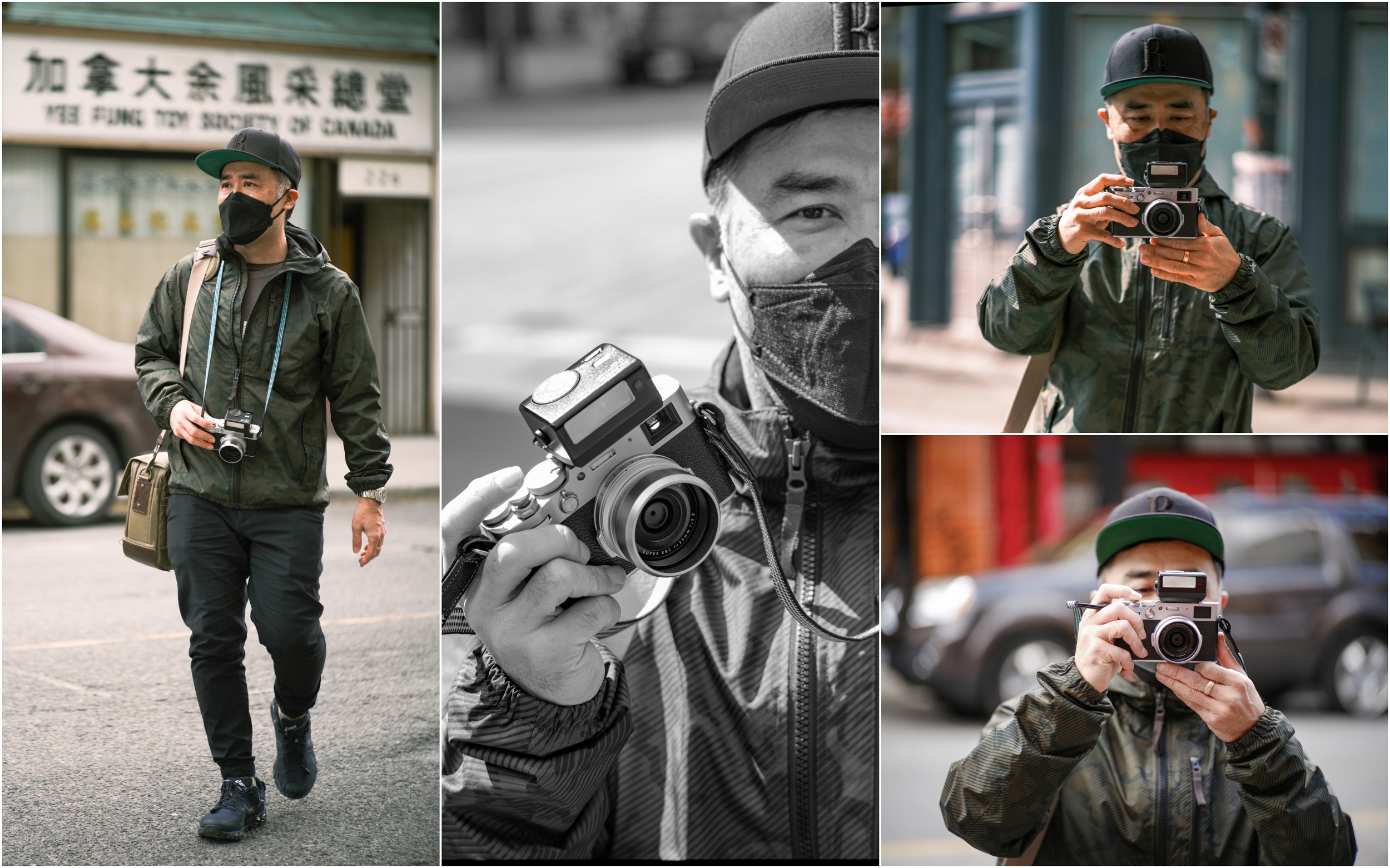
Photos by Kyle Riefsnyder. GFX100S + Nikkor 105mm f/2.5


